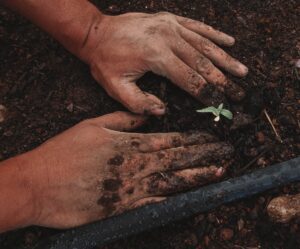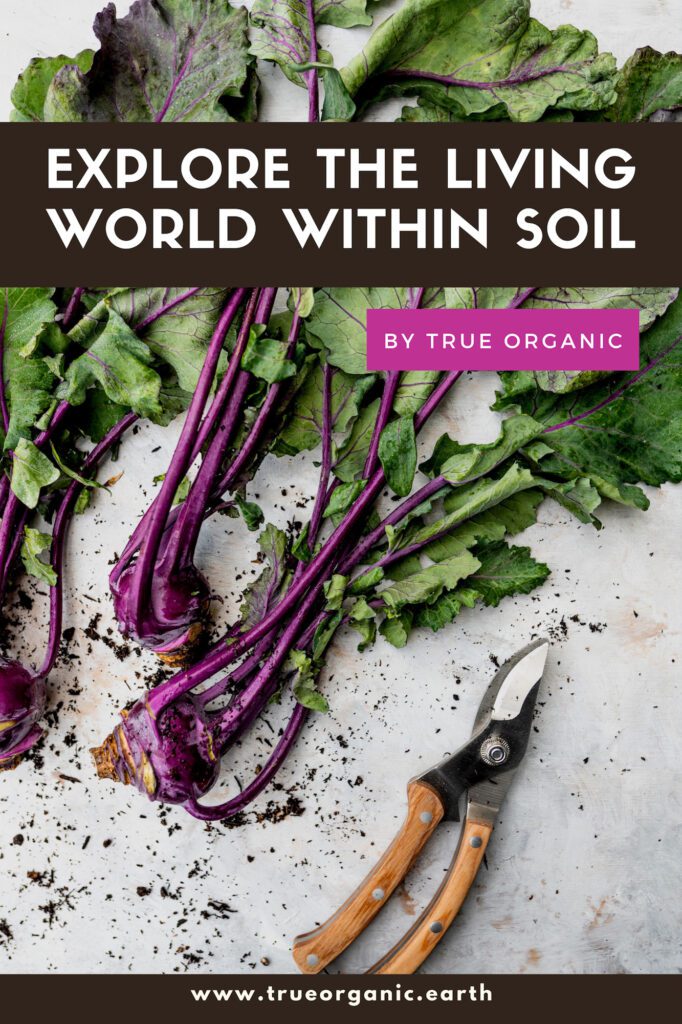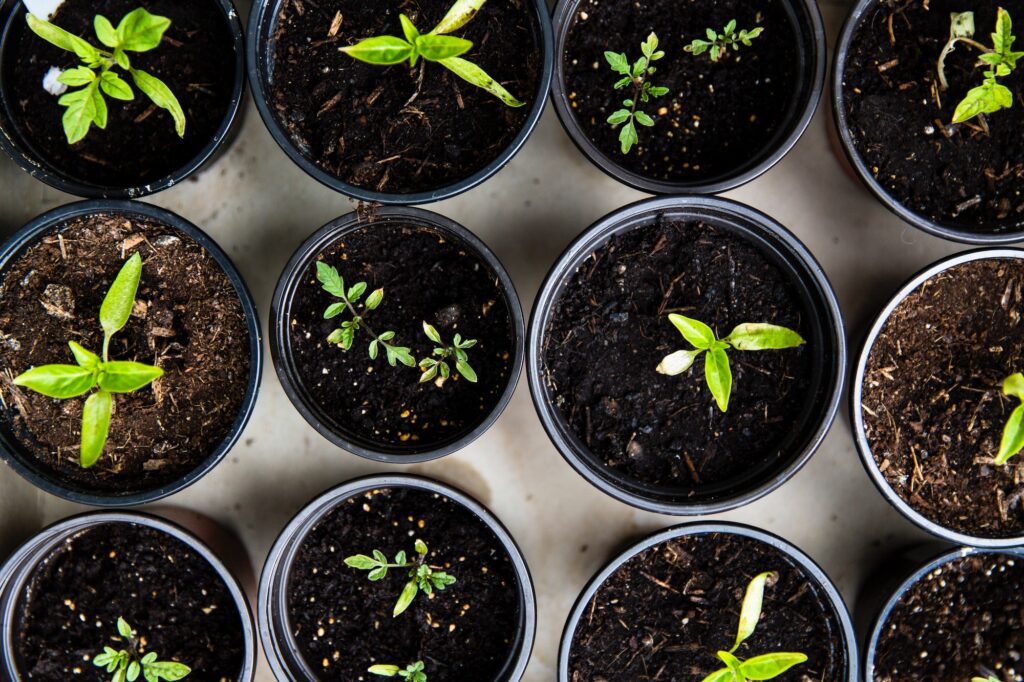June 25, 2021
The Living World Within Soil
Why is it so important to nourish your garden with organic ingredients? It’s all about the life within our soil.
Soil is virtually seething with life. There are more microorganisms in a teaspoon of soil than there are people on the entire planet. And these tiny life forms are more essential for a healthy Earth than you might think!
As long as these microorganisms have food and good living conditions, they’ll thrive in massive numbers. So what do they eat, and why are they there? Let’s dig in (couldn’t resist) and see what’s beneath the surface.

Soil is alive!
What is soil? The short answer: soil is unconsolidated material on the surface of the earth, about the top six or eight inches, that serves as a natural medium for plant growth. But that’s just the beginning.
Bacteria, fungus, protozoa, and nematodes live in soil by the *millions.* And that’s just the microscopic life forms. Earthworms, algae, arthropods, and other tiny plant-like forms and bug-life beings live in healthy soil. Soil is like a thriving world of life in itself, and the organisms that live in soil are also essential to nutrient cycles and are a keystone to all of life on the plant.
Soil is a combination of inorganic things (sand, silt, rock, minerals, and gases) plus organic matter (carbon-based material like dead plants, microorganisms, animal remains etc.). The organic matter is the alivepart. Millions of microorganisms live, eat, breathe, and reproduce in just a handful of soil. It’s also packed with a whole buffet of minerals and other nutrients. Worms and grubs spend their entire lifetimes crawling through soil, breaking down clumps of organic matter, keeping away bad microorganisms, and aerating the material.
Soil is a staple part of our planet’s balanced ecosystem, along with water and air, playing an essential part of life’s ability to survive here on Earth.
Think of soil’s microbiome like your own human body’s natural microbiome (like the helpful bacteria in your gut and on your skin), which is essential to your overall health and wellbeing. If something’s off in your digestive tract’s microbiology, the health of your whole living body is at risk.
That’s why restoring and maintaining a healthy microbiome for the planet’s soil is so vital—and why we’re so passionate about it.
Soil Superheros
What are some of the most important inhabitants of the world of soil?
Bacteria
There are anywhere from 100 million to one *billion* bacteria in a single teaspoon of healthy soil! As they munch on organic waste like dead plant material, these bacteria are the main drivers of decomposition, which releases nutrients for other organisms to use.
Fungi
Way more than just mushrooms, fungi are incredible lifeforms. Scientists continue to uncover ways that fungi are essential to life on Earth—in ways that we don’t even fully understand yet! In soil, fungi can break down nutrients, helping with decomposition. Some fungi attach themselves to plant roots to help them receive nutrients and grow.
Algae
Algae are sometimes overlooked soil residents. They’re much fewer in number than other soil organisms. Technically in the plant kingdom but not quite plants, algae add organic matter to soil (carbon material) when they die, and can help with soil structure, aeration, water retention, preventing erosion, and much more.
Earthworms
By far soil’s cutest (and biggest) inhabitant, earthworms do so much for soil health. They’re one of many kinds of bugs that live in soil, and there are thousands of different species of earthworms!
As worms slither around the earth, eating and producing castings (aka: worm poop), they drastically improve alter soil structure, proper moisture, support nutrient availability, and make space for plants roots to grow. Worm castings are incredibly enhancing for soil health!
Restoring the Soil, Reviving the Earth
As a natural layer of organic and mineral material, soil is perfect for plant life in just the way it is.
Unfortunately, in lots of places in the world, soil has been depleted of its natural structure and balance of microorganisms and nutrients— which threatens overall sustainability, biological fertility, and the health of every living thing on Earth (including humans).
The good news is that soil can be rebuilt and restored over time, even in your own backyard. It might just need a nutrient boost and some loving cultivation to be its best plant-nurturing self again. (That’s where fertilizers and soil amendments come in.)
Restoring soil’s natural abundance and vitality starts with attention to what we’re putting into the earth, including soil amendments, fertilizers, pesticides, irrigation and sewer systems, the fuels we burn, and anything else that will end up in our planet’s air, water, or soil.
Well-structured soil contributes to the biological wellness of forests, fields, and farms. How are you going to support the soil today?

Show us your True Organic Plants
#GrowWithTrue
www.trueorganic.earth


